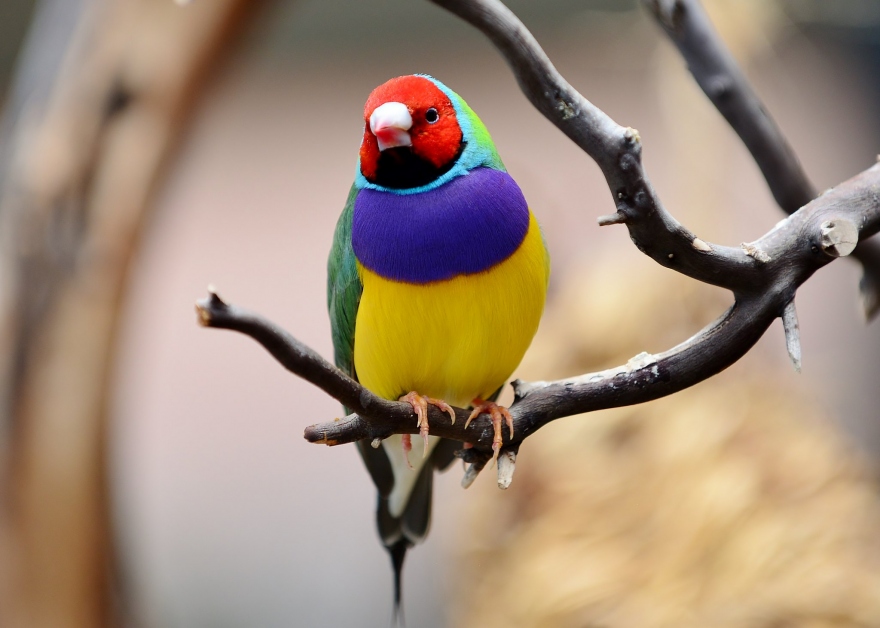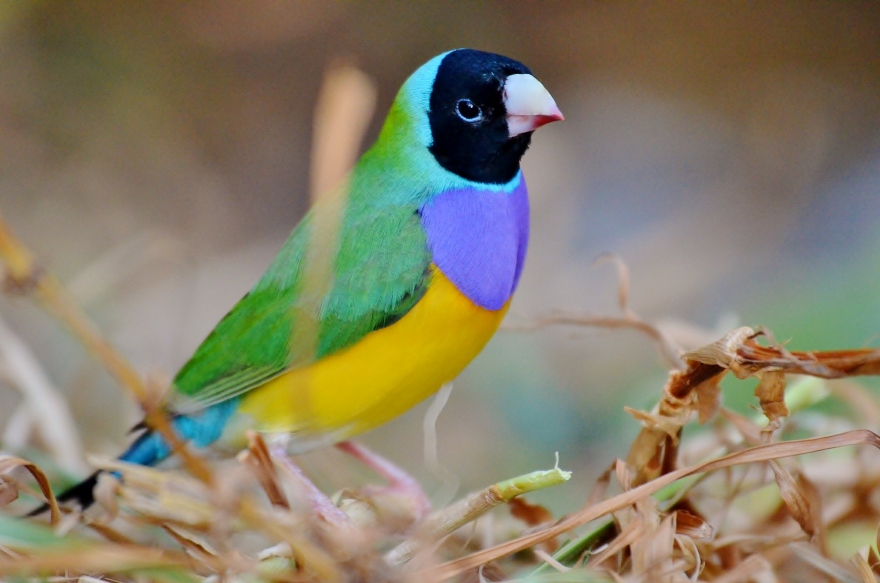Gouldian finches are easily one of Australia’s most striking finches species, and consequently are one of the most commonly kept birds in Australian aviaries. They’re an unusual species in that wild birds can come in three different colour variants—red-headed, black-headed, and orange-headed.

Black-headed Gouldians are the most common, making up roughly 70% of the wild population. Red-headed birds account for roughly 30% of the population, and the orange-head morph is only seen in about 1 in a 1000 wild birds. In this article, we look at some of the other fascinating implications of the different head colours.
Effect on personality
A 2012 study published in Animal Behaviour found that Gouldian finches with red heads were, on average, more aggressive than those with black or orange heads.
Scientists devised a test in which two Gouldians—one red-headed, one black-headed—were placed into a cage without food. After an hour, a food source that only one bird could access at a time was placed into the cage. The red-headed bird was shown to be significantly more aggressive in controlling access to that food station.
The same study also found that red-headed Goudlians were less inquisitive and more adverse to taking risks.
Another similar study found that red-headed birds also have higher levels of testosterone and corticosterone, offering some explanation as to why they’re more aggressive.
Reproductive preferences and sex-selection
Studies of wild-caught Gouldians in captivity have shown that females have a preference for red-headed males over black-headed and yellow-headed alternatives.
Sarah Pryke, a researcher at the Macquarie University, found that Gouldian pairs with the same head colour enjoyed higher offspring survivial rates than pairs with different head colours. Females offsprings of mismatched pairs had a mortality rate as high as 83.8%, compared to 40% for male offspring.
To adjust for this, Gouldians have developed an extraordinary and little understood mechanism to select the sex of their offspring. When matched head colours are paired, they produced a roughly equal number of males and females; however mismatched pairs produce 80% male chicks.
Amazingly, researchers found they could increase the number of females in a mismatched pair’s clutch simply by taking a black permenant marker to the red bird’s head.

What about natural selection?
Most of us learned the process of natural selection in school. The basic idea is that animals with traits that make them better at surviving are more likely to reproduce and pass along those traits. Over time, the animals with less desirable traits die out.
If that’s true, and it’s also true that red-headed Gouldians are more aggressive, less prone to taking risks, and more desired by females; why haven’t the black-headed and orange-headed Gouldian died out?
It turns out, Goudlians might be using an entirely different evolutionary mechanic. The Cornell Lab of Ornithology has demonstrated that there is another evolutionary process known as balancing selection that has allowed the Gouldians to maintain their head colour variation over thousands of generations.
The basic idea is that each head colour has both advantages and disadvantages, and these cancel each other out so no particular variant is able to completely dominate.
If you want to learn more about this fascinating little bird, please check out our Gouldian finch species profile.